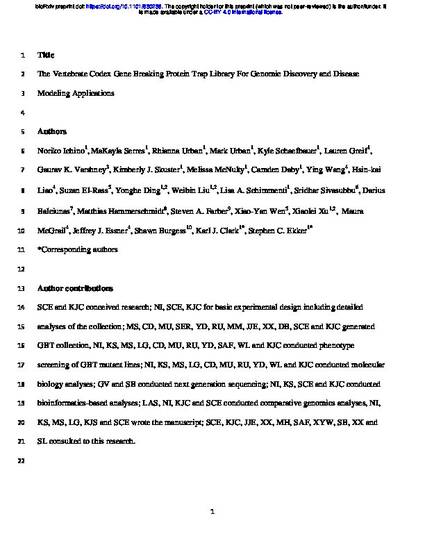
The zebrafish is a powerful model to explore the molecular genetics and expression of the vertebrate genome. The gene break transposon (GBT) is a unique insertional mutagen that reports the expression of the tagged member of the proteome while generating Cre-revertible genetic alleles. This 1000+ locus collection represents novel codex expression data from the illuminated mRFP protein trap, with 36% and 87% of the cloned lines showcasing to our knowledge the first described expression of these genes at day 2 and day 4 of development, respectively. Analyses of 183 molecularly characterized loci indicate a rich mix of genes involved in diverse cellular processes from cell signaling to DNA repair. The mutagenicity of the GBT cassette is very high as assessed using both forward and reverse genetic approaches. Sampling over 150 lines for visible phenotypes after 5dpf shows a similar rate of discovery of embryonic phenotypes as ENU and retroviral mutagenesis. Furthermore, five cloned insertions were in loci with previously described phenotypes; embryos homozygous for each of the corresponding GBT alleles displayed strong loss of function phenotypes comparable to published mutants using other mutagenesis strategies (ryr1b, fras1, tnnt2a, edar and hmcn1). Using molecular assessment after positional cloning, to date nearly all alleles cause at least a 99+% knockdown of the tagged gene. Interestingly, over 35% of the cloned loci represent 68 mutants in zebrafish orthologs of human disease loci, including nervous, cardiovascular, endocrine, digestive, musculoskeletal, immune and integument systems. The GBT protein trapping system enabled the construction of a comprehensive protein codex including novel expression annotation, identifying new functional roles of the vertebrate genome and generating a diverse collection of potential models of human disease.
Available at: http://works.bepress.com/maura-mcgrail/17/

This preprint is made available through bioRxiv, doi: 10.1101/630236.